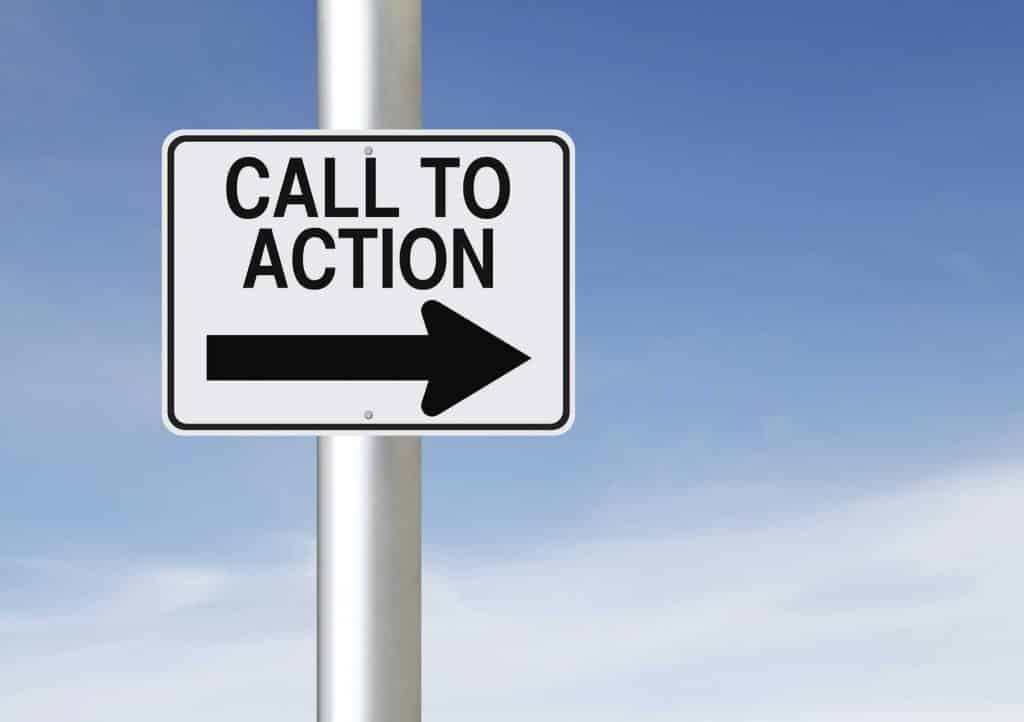What is a Call to Action?

Did you know that 70% of small business B2B websites lack a great call to action? Similar to when Obi Wan calls Luke to action by saying he needs to be trained in the force.
That’s a mind-blowing statistic considering call to actions are a great, effective way to boost conversions for any business in any industry.
Think about this in terms of your own website. What is the goal? Do you want people to buy your product or service? Or do you just want them to learn more about what you offer?
Once you know what you want your website visitors to do, you can create a call to action that will encourage them to take the next step. However, if you’ve never seen good call to action examples before then you might not know where to start in crafting them.
What makes a good CTA? And how can you create one that's effective for your business? Read on to find out!
What Is a Call to Action?
A call to action (otherwise known as a CTA in the marketing world) is an instruction to the reader, telling them what they need to do next in order to achieve the desired result.
A CTA can be as simple as "Buy now!" or "Sign up for our newsletter!" But it can also be more complex, like "Visit our website to learn more about how we can help you reach your goals." In Tom Cruise’s case it's JUMP OUT OF THAT PLANE!
The important thing is that a CTA is clear and specific and that it leaves the reader with a clear next step to take.
While CTAs are often used in marketing and advertising, they are also used in other contexts, like in blog posts or articles. In fact, any time you want your reader to take a specific action, a CTA can be helpful.
Why It’s Important to Use a Call to Action
Why is it important to use a call to action? Because without one, you’re just allowing people to leave your website without taking any desired actions.
A strong call to action can effectively motivate your visitors to take the next step, whether it’s signing up for a newsletter (if this is the option, make sure you are trading them something good for their email address), making a purchase, or anything else.
Keep in mind that your call to action should be:
- Clear
- Concise
- Easy to understand
And, it should be easy to identify on your website!
Oftentimes, if you have a WordPress website, this means getting a designer to help you create a visually-appealing CTA button that stands out in contrast to the rest of your site.
Benefits of Correctly Using Call to Actions on Your Website
First and foremost, an effective call to action can help boost conversions by providing a clear and concise path for users to follow.
By telling visitors what you want them to do next, you can guide them through the conversion process and increase the chances that they'll take the desired action. Kind of like reminding your husband you’ll make his favorite dinner once that trash gets taken out.
CTAs can also help to boost engagement by prompting users to interact with your content in a specific way. For example, if you want visitors to watch a video or read a blog post, including a CTA will encourage them to do just that.
Finally, CTAs can be used as a way to measure the effectiveness of your content. By tracking how many people take the desired action after seeing your CTA, you can get valuable insights into what's working and what isn't.
Great Call to Action Examples
Now that you have a good understanding of what a call to action is, it’s time to take a look at good call to action examples.
However, before we dig in, there are a few things to keep in mind when crafting a call to action.
First, make sure it's clear and concise. Second, ensure that it's relevant to the product or service you're selling. And third, make sure it's actionable; that is, it should tell the reader what they need to do next. With these guidelines in mind, let's take a look at a few great call to action examples.
The first example is from a furniture store that's having a big sale. The call to action here is "Come in and save!" This is clear and concise, and it tells the reader exactly what they need to do next. Plus, it's relevant to the product (furniture) and the offer (a discount) .
As an added benefit, they’ve told the customer exactly how they help (by helping them save). It’s clear, concise, and includes a value-based benefit that makes it hard for the customer to turn down.
The second example is from a travel website. The call to action here is "Book your dream vacation now!" Again, this is clear and concise, and it tells the reader what they need to do next. It's also highly relevant to the product (vacation packages) and the offer (discounted vacations).
Use Action-Oriented Words
Finally, when you learn how to write a call to action, the most helpful tip we have is to use action-oriented words. Why?
For one thing, action-oriented words help to create a sense of urgency. They make it clear that the reader needs to take action now, not later.
In addition, action-oriented words help to focus the reader's attention on the desired outcome. By telling the reader what they should do, action-oriented words make it more likely that the reader will actually do it.
Finally, action-oriented words help to increase conversions. Studies have shown that CTAs with action-oriented words are more effective at getting people to take the desired action than CTAs without them.
So if you want your CTAs to be successful, make sure to use some action-oriented words! (For those of you playing the word repetition = 1 shot game, we hope you aren't needing to drive.)
Why Are Calls to Action Important to Your Small Business?
From signing up for newsletters and downloading ebooks to making purchases or filling out contact forms, CTAs offer small businesses an opportunity to lead their customers down the right path towards conversion. They provide clear instructions and actionable steps that help make it easier for potential customers to take desired actions on your site.
With well-crafted CTAs you can increase customer engagement by providing a personalized experience – engaging users in conversations and walking them through different funnel stages based on their preferences. This helps drive conversions by turning casual website visitors into willing participants in purchase flows or signup processes.
Need Help With Your Website?
We hope these call to action examples have been helpful. However, we know that running an agency and managing your own website can be stressful and daunting.
If you’re looking to offload one of those tasks then let us take care of your website maintenance for you so that you can free up more of your time to invest in your business or even your web copy writing.
Our maintenance plans let you focus on what you do best. Click here to schedule an appointment today!
What is a Call to Action? Summary
• 70% of small business B2B websites lack effective call to actions.
• CTAs should be clear, concise, specific, and easy to identify.
• CTAs can boost conversions and engagement by providing a path for users to take desired action.
• Good CTA examples are "Buy now!", "Come in and save!" or "Book your dream vacation now!".
• Action-oriented words are powerful because they create a sense of urgency and focus attention on the desired outcome.
• Outsourcing website maintenance is an option if you want to free up more of your time.



